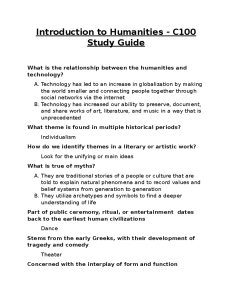Edvard Munch’s artwork “Two Human Beings (The Lonely Ones),” painted between 1906 and 1908, is a profound exploration of human isolation and connection, brilliantly displayed at the Harvard Art Museums. This iconic piece vividly illustrates the tension between companionship and solitude through the depiction of a man and a woman standing apart yet side by side on a rocky shore, gazing out to sea. As visitors delve into this captivating piece, they gain insights into Munch’s artistic techniques, which evolved throughout his prolific career. The exhibition surrounding Munch’s work invites both art enthusiasts and casual viewers to engage in a detailed analysis of “Two Human Beings” while highlighting the broader implications of loneliness and companionship in human relationships. This juxtaposition makes Munch’s prints and paintings an essential subject of study, showcasing his artistic genius as he revisited this motif repeatedly over four decades, reflecting the nuances of human emotions and interactions.
In the captivating realm of Edvard Munch’s artistic legacy, the painting known as “Two Human Beings (The Lonely Ones)” serves as a cornerstone for understanding his exploration of emotional states. This striking artwork, set against a serene yet stark shoreline, features two figures whose positioning evokes themes of both connection and solitude. Notably, Munch’s varied iterations of these figures—from prints to paintings—demonstrate his innovative artistic techniques and his lasting obsession with portraying human relationships. By attending relevant exhibitions, such as those at notable institutions like the Harvard Art Museums, audiences can immerse themselves in a comprehensive analysis of Munch’s work, gaining new perspectives on the interplay of isolation and companionship. Collectively, Munch’s enduring motifs and approaches to printmaking invite viewers to engage deeply with the emotional landscapes of his creations.
Exploring Edvard Munch’s Obsession with ‘Two Human Beings’
Edvard Munch’s relentless exploration of the motif ‘Two Human Beings’ demonstrates his evolving artistic vision as he delved into the themes of human connection and isolation over a span of 40 years. This motif, featuring a man and a woman on a shoreline, captures a moment of both togetherness and solitude. Munch’s use of varying color palettes and techniques—from oil paintings to woodblock prints—allowed him to express a wide array of emotions and interpretations associated with the figures. His repeated engagement with these figures reflects a profound artistic dialogue, emphasizing the timelessness of his subjects and the perpetual relevance of their narratives.
The numerous versions of ‘Two Human Beings’ spawned from visits to the canvas and experimentation with print techniques. Each iteration reveals layers of meaning: are the figures symbols of companionship, or do they embody profound loneliness? Art experts, including exhibition curators, suggest that while Munch’s works are often associated with despair, deeper examination unveils a spectrum of interpretations where companionship and contemplation also thrive. In understanding Munch’s process, one can appreciate how his techniques not only captured his emotional landscape but also evolved as he grappled with the essence of human relationships.
The Artistic Techniques Behind Munch’s ‘Two Human Beings’
Munch’s unique artistic techniques play a pivotal role in the reception of ‘Two Human Beings.’ He masterfully painted with thick textures, using layers to create depth, while also intentionally leaving portions of his canvas unpainted. This approach fosters a dynamic presence, inviting viewers to explore an incomplete yet vivid representation of emotion. The notion of embracing flaws in his artwork led Munch to critique the traditional standards of finish in art, reinforcing the idea that imperfections can convey the tumultuous nature of human experiences.
In addition to his brushwork, Munch’s innovative printmaking processes further redefine the interpretation of ‘Two Human Beings.’ By employing woodblock techniques, he broke down the images into separate elements that he could ink and reassemble, allowing for infinite color and compositional variations. This level of experimentation vividly illustrates Munch’s complex artistic journey and how he leveraged different mediums to express ever-changing emotional states. Through this exploration, Munch crafted a narrative that transcended simple imagery, reflecting the nuances of human connection.
The Significance of Munch’s Work in Modern Art
Munch’s contributions to modern art cannot be overstated, particularly through seminal works like ‘Two Human Beings.’ His paintings are imbued with psychological depth and emotional resonance that speak to universal human experiences. The Harvard Art Museums’ exhibition highlights the importance of appreciating Munch not only as a troubled artist but as a visionary who explored the boundaries of both traditional and contemporary art forms. Munch’s ability to dissect the human condition and translate complex emotions into simple compositions remains a poignant inspiration for artists today.
As one of the pioneers of Expressionism, Munch featured prominently in the narrative of modern art, influencing generations of artists in the pursuit of emotional authenticity. His works, including various iterations of ‘Two Human Beings’, invite viewers into an intimate conversation with their own feelings of loneliness and connection, underscoring the shared human experience. The ongoing exploration of Munch’s art in exhibitions fosters a deeper understanding of his innovative techniques and thematic concerns, ensuring that his legacy continues to inspire rich discourse in the arts.
Narratives of Loneliness and Connection in Munch’s Artwork
Munch’s ‘Two Human Beings’ stands as a compelling narrative that wrestles with the themes of loneliness and connection. The juxtaposition of the two figures, often depicted side by side yet turned away from each other, speaks volumes about the nature of human relationships. Critics have long debated whether Munch’s portrayal conveys isolation or a deeper bond between the figures, suggesting that the essence of Munch’s works lies in their capacity to evoke multiple interpretations—allowing viewers to project their understanding of connection.
Recent analyses of Munch’s art further suggest that the emotions conveyed through ‘Two Human Beings’ might not solely represent isolation but also intimate moments of shared contemplation. The colors, textures, and spatial arrangements evoke a sense of quiet reflection, encouraging viewers to consider the nuances present in their relationships with others. This duality of interpretation highlights Munch’s mastery in addressing the psychological complexities inherent in forming connections, thus enriching the conversation around his enduring legacy in the art world.
Interpreting ‘The Lonely Ones’: Munch’s Reflective Journey
The title ‘The Lonely Ones’ encapsulates the essence of Edvard Munch’s exploration of solitude amidst companionship in his artwork, particularly in ‘Two Human Beings.’ This nuanced reflection challenges the viewer’s preconceived notions of loneliness, positing it as an integral part of human experience rather than a mere absence of connection. Munch’s artistic journey, marked by multiple iterations of this motif, allows for an in-depth investigation into the nature of relationships—offering an opportunity to reflect on our experiences of solitude, stillness, and personal contemplation.
By embracing the complexities of human emotions, Munch invites observers to question the truly isolating nature of modern existence, often experienced even in the company of others. The artist’s recurring themes prompt us to find beauty in moments of stillness and intimacy, suggesting that true connection transcends physical presence. Through ‘Two Human Beings,’ Munch ignites an important dialogue on how we perceive relationships in a world increasingly defined by external connectivity and social isolation.
Munch’s Legacy through Prints: The Influence of ‘Two Human Beings’
Edvard Munch’s legacy extends significantly through his exploration of printmaking, particularly in relation to ‘Two Human Beings.’ His integration of various print techniques enabled him to transform a single motif into an expansive emotional landscape, thereby cementing his impact within the canon of modern art. By using woodblock prints, Munch not only diversified his artistic expression but also made art more accessible, opening pathways for broader interpretation and appreciation of his work. This collective approach allowed viewers to engage with the intricate dance between isolation and connection depicted in his art.
Through printmaking, Munch captures the essence of ‘Two Human Beings’ with a finesse that encourages a reflective experience. Each print’s unique attributes—different colors, technique variations—offer viewers an array of emotional responses that challenge the fixed narratives of loneliness. As Munch’s prints become a focal point in art collections such as the Harvard Art Museums, they remind us of his innovative spirit and ability to reimagine the same theme through diverse mediums, ultimately enriching the dialogue around human relationships in art.
The Impact of Artistic Interpretation on ‘Two Human Beings’
Artistic interpretation plays a crucial role in understanding Munch’s ‘Two Human Beings.’ The subjective nature of art means that each viewer brings their unique experiences and emotions to the piece, shaping their understanding of the figures and their relationship on the shore. Curatorial insights from exhibitions, such as ‘Edvard Munch: Technically Speaking,’ challenge us to reassess preconceived notions of loneliness versus connection, highlighting the various emotional layers at play—prompting audiences to engage deeply with Munch’s intent behind the artwork.
Furthermore, discussions around Munch’s approach to artistic technique reveal an inviting perspective on interpretation. His willingness to embrace imperfections fosters a greater appreciation for the complexities that each viewer brings to the experience. The variations in style and medium not only delineate Munch’s artistic evolution but also invite conversations around the constant search for meaning and connection—a testament to the enduring impact of his work in contemporary art discussions.
Through dialogues around ‘Two Human Beings,’ art enthusiasts gain insight into how Munch’s works evolve through varying interpretations and artistic techniques, thus reflecting the intricate tapestry of human relationships.
Cultural Reflections in Munch’s Art: The Role of Environment
Munch’s art profoundly reflects cultural nuances, particularly in his recurring motif ‘Two Human Beings.’ The setting—a rocky shoreline—serves not only as a backdrop but as a metaphorical landscape that symbolizes the tumultuous nature of human emotions and relationships. This coastal environment, juxtaposed with the isolation of the figures, encapsulates broader themes of existential longing and human connection. By situating his subjects within this cultural landscape, Munch compels viewers to reflect on the environmental factors contributing to human interactions.
As we continue to engage with Munch’s work through exhibitions and analyses, it becomes evident that the environment profoundly influences our interpretations of loneliness and connection. Munch’s ability to evoke these themes through landscape and figure emphasizes the importance of context in art interpretation. This exploration of cultural reflections in ‘Two Human Beings’ reveals not only the artist’s genius but also highlights how environmental elements can enhance the emotional depth of human relationships—a discourse that remains relevant in today’s art worlds.
The Enduring Popularity of Munch’s ‘Two Human Beings’
The enduring popularity of Edvard Munch’s ‘Two Human Beings’ is indicative of its profound resonance with audiences throughout history. As a focal point in exhibitions like the one at Harvard Art Museums, this artwork captures the zeitgeist of various generations—addressing themes of isolation, human connection, and emotional complexity that remain prevalent in modern society. Munch’s ability to articulate emotional experiences in such a relatable manner ensures that viewers continue to find relevance in his work today.
Furthermore, the motif’s adaptability across mediums—from paintings to prints—highlights its suitability for embedding new meanings over time. As art continues to evolve, Munch’s legacy remains significant, sparking dialogue on loneliness amidst companionship, which is especially pertinent in an increasingly digitally connected world. The universal themes embedded in ‘Two Human Beings’ will ensure its continued examination and appreciation in future art conversations, solidifying Munch’s status as a timeless observer of the human condition.
Frequently Asked Questions
What themes are explored in Edvard Munch’s Two Human Beings?
Edvard Munch’s Two Human Beings, also known as The Lonely Ones, primarily explores themes of isolation and companionship. The figures in the painting face away from the viewer towards the sea, symbolizing both separation and connection. Munch’s repetitive iterations of this motif reflect his deep dive into the complexities of human relationships and emotional states.
How has Edvard Munch’s Two Human Beings been interpreted over time?
Over time, Edvard Munch’s Two Human Beings has been interpreted in various ways, initially viewed as a depiction of loneliness, yet recent analysis suggests it may also represent companionship and contemplation. Munch himself embraced the ‘lonely’ interpretation as it resonated with viewers, but elements within the artwork hint at deeper connections between the figures and their surroundings.
What artistic techniques does Edvard Munch employ in Two Human Beings?
In Two Human Beings, Edvard Munch employs a variety of artistic techniques, including thick brushstrokes, unpainted areas, and a mix of colors to create dynamism and depth. His innovative use of woodblock printing allowed him to explore the composition extensively, leading to multiple interpretations and variations that showcase his mastery in blending expressionist techniques.
Where can I view Edvard Munch’s Two Human Beings?
Edvard Munch’s Two Human Beings is currently on display at the Harvard Art Museums as part of the exhibition titled Edvard Munch: Technically Speaking. This exhibition showcases a collection of Munch’s artworks, providing insights into his techniques and artistic evolution. It runs until July 27, showcasing one of the largest collections of his works in the U.S.
What impact did Edvard Munch’s Two Human Beings have on modern art?
The impact of Edvard Munch’s Two Human Beings on modern art is significant as it embodies the exploration of emotional depth and human connections. Munch’s ability to convey complex psychological states through this motif contributed to the evolution of expressionism, influencing numerous artists in their explorations of similar themes.
How did Edvard Munch experiment with prints of Two Human Beings?
Edvard Munch experimented extensively with prints of Two Human Beings, utilizing a jigsaw technique in woodblock printing that allowed for individual inking and compositional variations. This methodology not only enhanced the visual expression of the figures but also facilitated a broader exploration of color and form, demonstrating Munch’s innovative approach to printmaking.
What is the significance of the title ‘The Lonely Ones’ in relation to Munch’s Two Human Beings?
The title ‘The Lonely Ones’ signifies the emotional undertones present in Edvard Munch’s Two Human Beings. It encapsulates the perceived isolation of the figures despite their proximity, prompting viewers to reflect on themes of loneliness amid companionship, a prevalent theme throughout Munch’s body of work.
What role does the landscape play in Edvard Munch’s Two Human Beings?
In Edvard Munch’s Two Human Beings, the landscape serves as both a backdrop and a character that influences the emotional context of the figures. The shoreline and sea contribute to the themes of solitude and reflection, while Munch’s integration of the landscape into the figures, especially the male form, enhances the connection between the characters and their environment.
How many iterations of Two Human Beings did Edvard Munch create?
Edvard Munch created numerous iterations of Two Human Beings over a span of more than 40 years, showcasing the motif through various mediums including paintings and prints. Each version presents slight variations in color, form, and technique, illustrating his evolving artistic expression and deep fascination with the theme.
| Key Point | Description |
|---|---|
| Title and Year | ‘Two Human Beings (The Lonely Ones), 1906-8’ by Edvard Munch, an iconic oil painting housed at Harvard Art Museums. |
| Thematic Exploration | An examination of the recurrent motif of a man and woman standing side by side at the shore, reflecting themes of companionship and isolation. |
| Artistic Techniques | Munch used varied painting techniques, creating different textures and effects, often leaving parts of the canvas unpainted to convey dynamism. |
| Printmaking Exploration | Munch deconstructed and reassembled the figures in prints, leading to diverse interpretations through color and form. |
| Critique of Munch’s Work | Munch faced criticism for perceived imperfections in his work, which he embraced as part of his artistic expression. |
| Exhibition Insights | The current exhibition, ‘Edvard Munch: Technically Speaking,’ showcases insights into Munch’s techniques and thematic obsessions through 70 works. |
Summary
Edvard Munch’s ‘Two Human Beings’ represents a profound exploration of human relationships and emotional states, beautifully captured through Munch’s unique artistic lens. The painting features a couple at the shoreline, situated in a nuanced interplay of connection and isolation. Munch’s repeated engagement with this motif over four decades reveals not only his obsession but also his evolution as an artist. The current exhibition at the Harvard Art Museums highlights the versatility and depth of Munch’s work, inviting viewers to reconsider the meanings behind this iconic piece amidst the fluidity of human experience.




